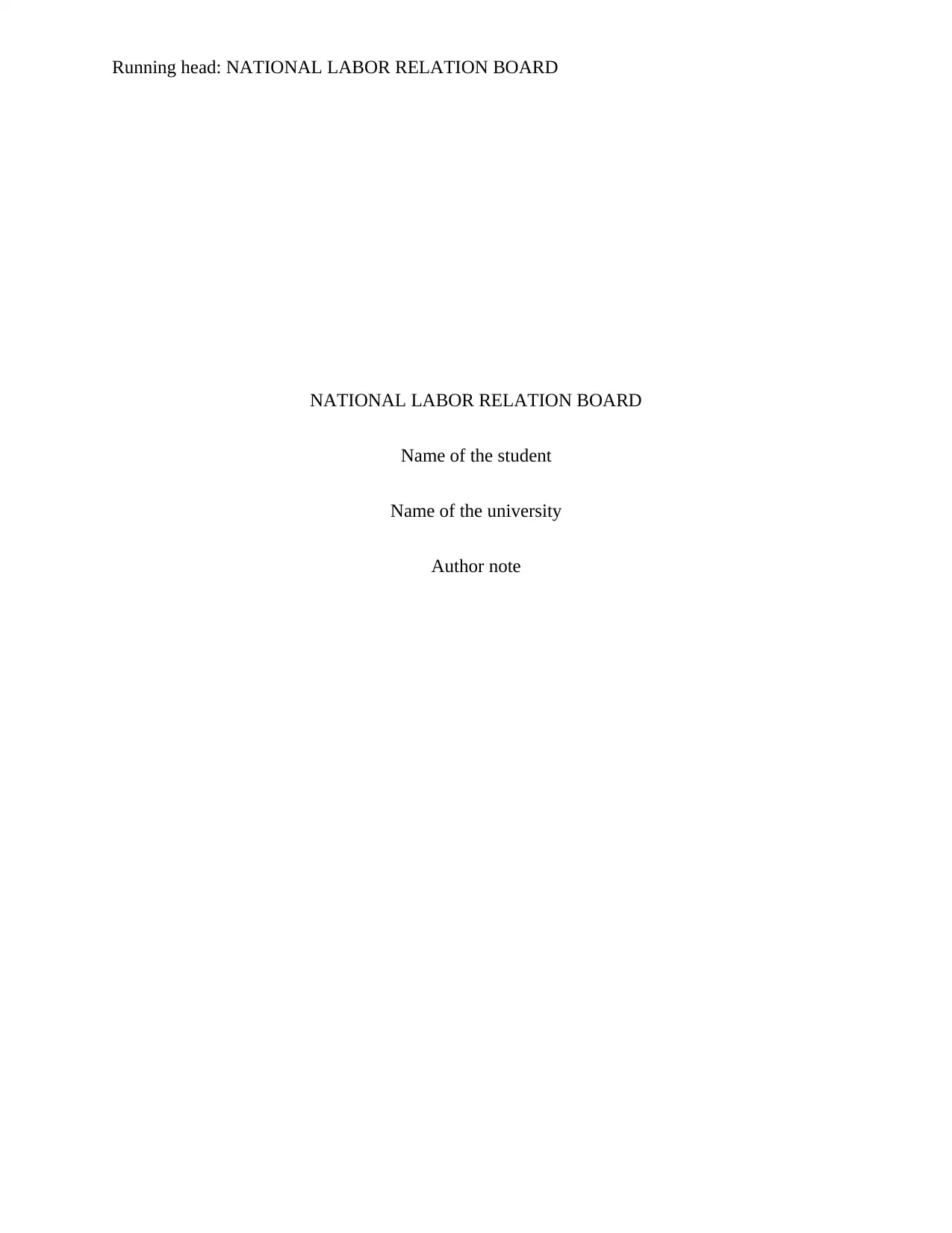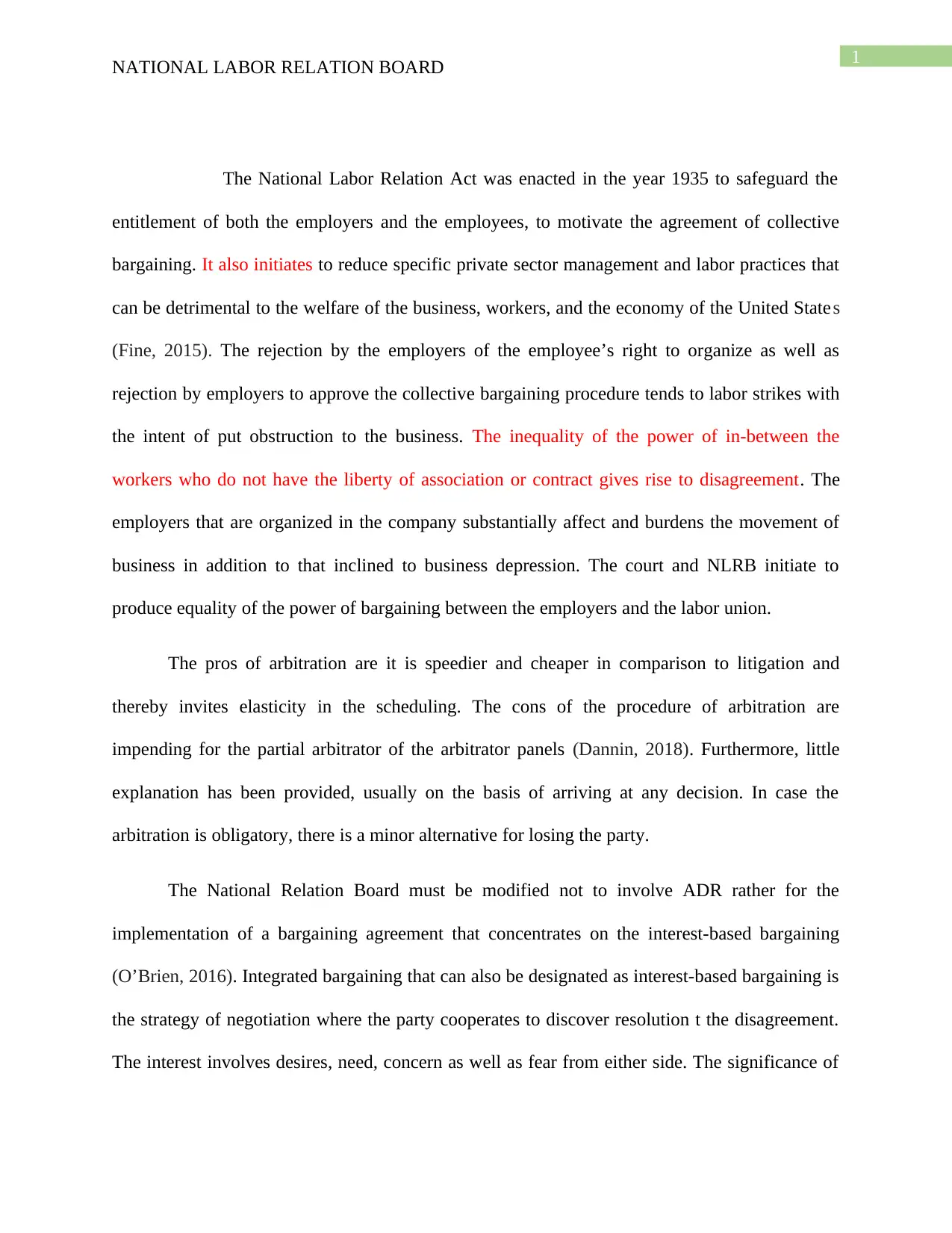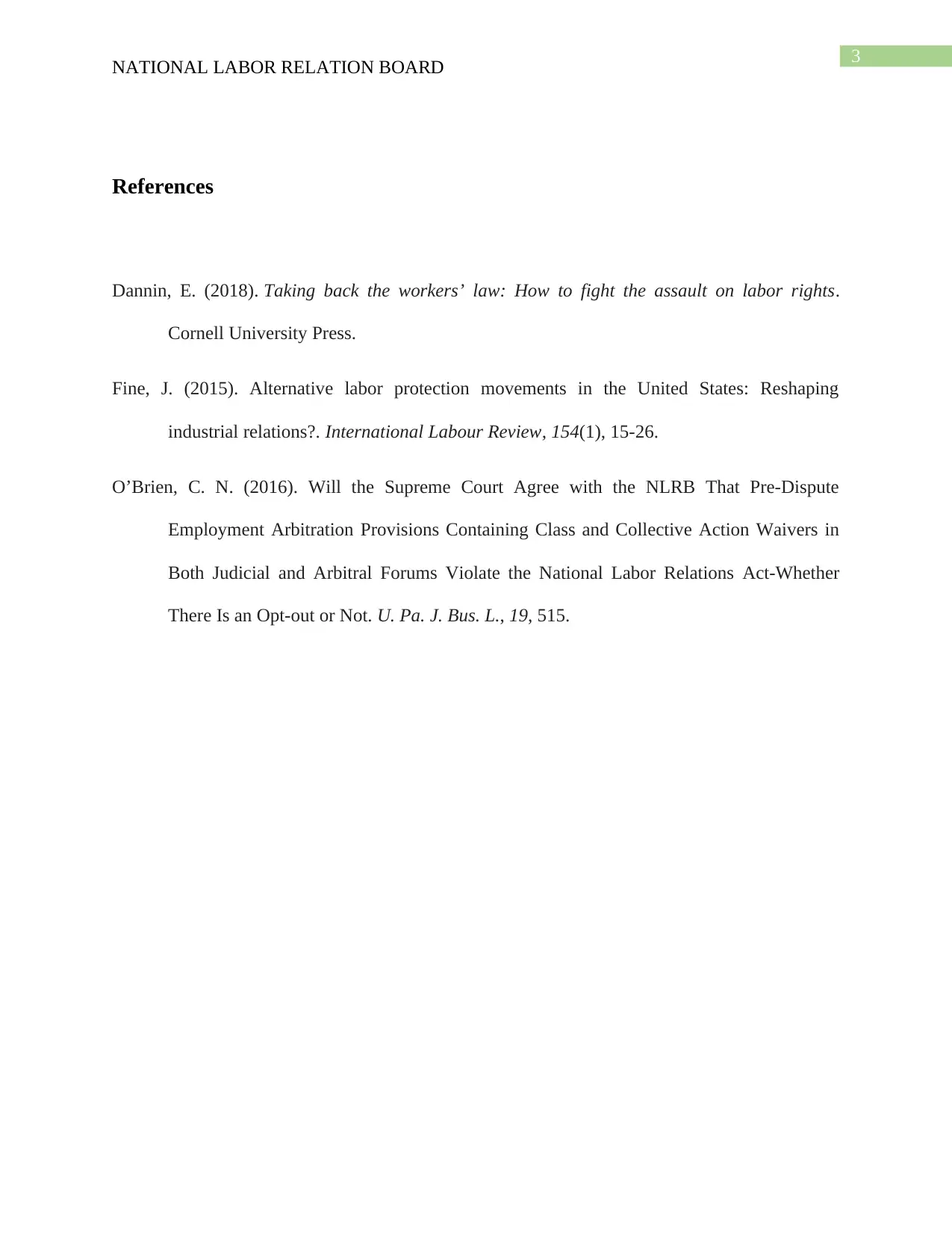NLRB Report: Analysis of Labor Relations, Arbitration, and Bargaining
VerifiedAdded on 2022/08/24
|4
|506
|14
Report
AI Summary
This report examines the National Labor Relations Board (NLRB), its role in labor relations, and the use of arbitration. It discusses the NLRB's functions in safeguarding employee rights, addressing labor disputes, and promoting collective bargaining. The report highlights the advantages and disadvantages of arbitration, including its speed and cost-effectiveness compared to litigation, as well as the potential for partial arbitrators and limited explanations of decisions. It advocates for a shift towards interest-based bargaining within the NLRB, emphasizing cooperative negotiation to resolve disputes by considering the needs, concerns, and fears of both parties, allowing them to trade off issues to achieve mutually beneficial outcomes. The report references relevant literature on labor law and the NLRB's practices.
1 out of 4











![[object Object]](/_next/static/media/star-bottom.7253800d.svg)